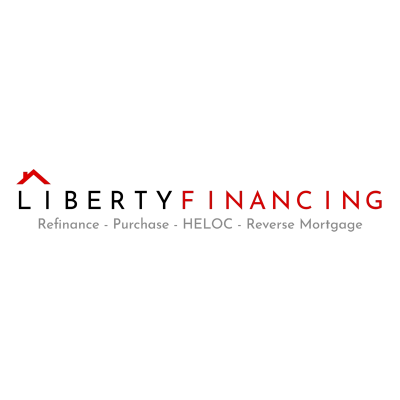10 Strategies for Managing Difficult Customers
Taming the storm of difficult customer interactions is both an art and a science. This article peels back the layers, offering expert-driven strategies to turn challenging exchanges into opportunities for growth and satisfaction. With insights drawn from seasoned professionals, navigate the complex landscape of customer service with confidence and finesse.
- Transform Difficult Clients with Expertise and Patience
- Listen, Validate, Solve: A Winning Customer Approach
- Defuse Tension Through Active Listening and Solutions
- Acknowledge Concerns Before Problem-Solving with Customers
- Set Clear Expectations to Manage Demanding Clients
- Shift Focus to Client Goals for Smoother Progress
- Stay Calm and Communicate Proactively with Clients
- Build Understanding Through Empathy and Clear Boundaries
- Listen First, Then Offer Strategic Solutions
- Remain Calm and Find Common Ground
Transform Difficult Clients with Expertise and Patience
Handling a consistently difficult or demanding customer comes down to patience, clear communication, and setting firm but fair boundaries. One strategy that has worked for me is actively listening to their concerns without taking things personally, then offering practical solutions that align with their expectations. A great example of this was a client who was extremely particular about their hedges. They would measure the height after each trim and call me back if even a centimeter was off. Instead of seeing it as a hassle, I leaned on my 15 years of experience and my horticulture certification to educate them on how minor variations in cutting can actually promote healthier growth. I also implemented a detailed consultation before each trim, ensuring we were on the same page. Over time, the client saw my expertise in action, trusted my advice, and we built a great working relationship where they no longer felt the need to micromanage.
My qualifications played a key role in turning this into a positive outcome. Because I understood plant physiology, I could confidently explain why their initial approach might not be the best for long-term hedge health. My years of experience also taught me how to manage client expectations in a professional yet friendly way. Instead of pushing back when they were being demanding, I used my knowledge to guide them toward a better approach. Eventually, they went from being my most difficult customer to one of my most loyal, referring me to several friends and neighbors. It's a perfect example of how expertise, patience, and communication can turn a tough situation into a win for both the business and the client.
Listen, Validate, Solve: A Winning Customer Approach
At Zapiy.com, we believe that even the most difficult customers can become loyal advocates if handled correctly. One strategy that has worked well for me is the "Listen, Validate, Solve, and Set Boundaries" approach.
I had a client who was consistently demanding--sending urgent requests at all hours, expecting immediate responses, and frequently changing requirements. Instead of getting frustrated, I made it a point to actively listen to their concerns, validating their frustrations while calmly reinforcing what was possible.
For example, I scheduled a direct call to address their concerns, acknowledged their challenges, and clearly outlined what we could realistically deliver within our process. I also set clear expectations on response times and scope, which immediately reduced the tension. Surprisingly, the moment they felt heard and knew what to expect, their behavior shifted--they became easier to work with, and we built mutual respect.
The key takeaway? Empathy and clear boundaries go hand in hand. Customers want to feel valued, but they also need to understand the framework within which you operate. When done right, even the most demanding clients can turn into your biggest supporters.
Defuse Tension Through Active Listening and Solutions
Dealing with a consistently difficult or demanding customer can be challenging, but I've found that actively listening and staying calm is essential in these situations. One strategy that has worked for me is to acknowledge the customer's frustrations without getting defensive. This helps defuse the tension and makes the customer feel heard. I always make sure to ask open-ended questions to better understand their needs and the root of their dissatisfaction. This approach gives the customer an opportunity to vent, and more importantly, it allows me to gather all the information needed to find a solution.
Once I've fully understood their concerns, I focus on offering a solution-oriented response, providing clear options to address the issue. If the customer is still upset after we discuss potential solutions, I make sure to follow up promptly to ensure the issue is resolved to their satisfaction. This strategy has helped me turn many difficult situations around. By staying calm, empathetic, and solution-focused, I've managed to not only keep customers satisfied but also build a stronger relationship with them, even when things initially seemed tough.

Acknowledge Concerns Before Problem-Solving with Customers
Handling a demanding customer takes patience and a level-headed approach. What's worked best for me is making sure they feel heard before jumping into problem-solving. Often, people just want to know their concerns are being acknowledged, so I take the time to listen without interrupting or rushing to explain. Once they've had their say, I repeat back the main points to confirm I understand, which helps ease the tension.
From there, I focus on finding a reasonable solution while keeping expectations clear. If a request is outside what's possible, I calmly explain the limitations while offering alternative options when possible. If the customer remains difficult, I maintain professionalism and avoid getting drawn into negativity. Setting boundaries while staying respectful has helped me turn tense situations into more positive outcomes, and in some cases, even build stronger relationships with customers over time.

Set Clear Expectations to Manage Demanding Clients
First, I think it's important to recognize that "difficult" and "demanding" aren't quite the same. A demanding customer may simply have high standards. As long as they communicate their expectations clearly and remain reasonable, they're not necessarily hard to work with.
In either case, the most effective strategy I've found is to establish firm professional boundaries and set clear expectations from the very beginning. Be upfront about what services or products you offer, any guarantees (if any) you make about outcomes, how and when you'll communicate, realistic delivery timelines, and anything else that could become a point of contention. Ideally, provide this information in writing and ask the client to sign off on it. That way, everyone starts on the same page.
Of course, you won't always know a customer will be difficult until after you begin working together. When that happens, my advice is to stay calm, avoid reacting emotionally, and focus on solutions. One question that's worked well for me is: "What can I do to make this right?" It gives the customer a sense of control and shows that you're willing to work with them. Even if you can't give them exactly what they want, their answer provides a starting point for a more productive conversation.
In the end, clear communication, mutual respect, and proactive boundaries go a long way in managing even the most challenging customer relationships.

Shift Focus to Client Goals for Smoother Progress
Some clients resist change, even when they've hired you to create it. Instead of pushing back, I shift the focus to their goals - what they want their home to feel like, not just look like. One client clung to years of clutter, convinced every item had a purpose. Instead of arguing, we walked through her space together, discussing what she actually used. Once she saw how much easier life could be without the excess, she was ready to let go. Difficult clients aren't impossible - they just need the right approach. When you lead with understanding instead of authority, real progress happens.

Stay Calm and Communicate Proactively with Clients
I find the best way to handle difficult customers is to stay calm, listen to their concerns fully, and let them know their feelings are valid. Often, people just want to feel heard before they're willing to work toward a solution. I focus on understanding what's causing their frustration and then provide clear, actionable steps to address it.
Once, I worked with a client who was unhappy with the timeline of their mortgage approval. They felt the process was dragging and became quite upset. I sat down with them to explain every step of the approval process and clarified where delays were occurring. I also kept them updated daily, even if there was no major progress, so they felt informed and reassured.
By being transparent and proactive with communication, we successfully closed their mortgage, and they later referred me to a friend, which showed me the importance of staying patient and solution-focused.

Build Understanding Through Empathy and Clear Boundaries
Dealing with a consistently difficult customer can test even the most patient professionals, but one effective strategy is to maintain a high level of empathy. By actively listening and showing that you understand their concerns, you can often defuse tension and create a more positive interaction. It's important to remember that their frustration or demands often stem from their own needs or issues that may not be immediately apparent.
Another approach is to set clear, consistent boundaries and communicate effectively. For example, if a customer frequently demands quicker responses than you can reasonably provide, explain your typical turnaround times and the reasons behind them. This can help to manage their expectations and reduce frustration on both sides. In past experiences, I've found that reinforcing these boundaries in a calm, professional manner typically leads to more respectful interactions moving forward. Offering alternative solutions or compromises where possible also demonstrates your commitment to resolving their issues. Ultimately, showing a consistent and sincere effort to help, despite the challenges, can foster understanding and sometimes even turn a difficult customer into a loyal advocate.

Listen First, Then Offer Strategic Solutions
My strategy for dealing with difficult customers is to always listen first and remain calm. I make sure to understand their concerns fully before responding, which helps defuse any tension. After that, I focus on finding a solution that works for both sides, while keeping the conversation respectful and professional. For example, we had a client who was unhappy with a design direction for their website, feeling it didn't reflect their vision. Instead of pushing back, I took the time to explain the strategic thinking behind the design choices, like how certain elements would improve site navigation and conversion rates. I also offered some tweaks that could bring in more of their desired aesthetic without compromising functionality.

Remain Calm and Find Common Ground
Difficult customers might blame me for their problems, but I've found that their behavior is rarely about me. Maybe they're entitled, or maybe they just have unrealistic expectations. Whatever the case, I focus on staying calm so that I don't become like them. I try to find a way to say yes, even if I'm not able to give them what they ask for. Find some common ground no matter how you feel about their behavior. When you remove any personal feelings from the situation, difficult customers become a little easier to deal with.




